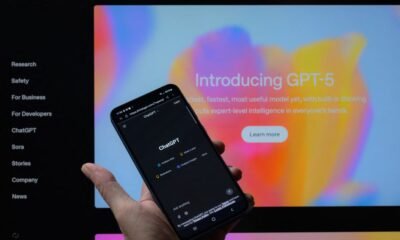Greenwood Village, Sept. 11, 2025 (GLOBE NEWSWIRE) — Greenwood Village, Colorado – September 11, 2025 –
Franchise AiQ™, the AI-powered marketing and lead activation platform for franchisors and franchisees, announced today that it will host an in-person educational event, AI for Franchises: Revolutionize Your Franchise with the Power of AI, on Wednesday, September 24, 2025 from 6:00 PM to 8:00 PM MDT at Venture X Denver Tech Center.
This high-impact session is designed to help franchise owners, multi-unit operators, and industry professionals understand how Artificial Intelligence (AI) is transforming the way franchises operate, grow, and compete.
The franchise industry is at a crossroads. Customer expectations are evolving, digital-first competitors are rising, and operational costs continue to climb. Many franchise owners are asking how they can deliver consistent service, scale efficiently, and still compete in local markets. The answer increasingly involves AI.
Artificial Intelligence is no longer a “nice-to-have” tool reserved for large corporations. It is now an essential resource for everyday franchise operations. Owners who educate themselves on AI and begin leveraging it in marketing, sales, and customer service are positioning their businesses to thrive in the years ahead. Those who delay risk falling behind competitors that embrace automation, personalization, and data-driven decision-making.
This Meetup will show attendees exactly how to make AI work for their franchise model, combining education with real-world strategies.
What franchise owners will gain from attending – Participants will walk away with practical insights, including:
Proven tactics to streamline operations and reduce unnecessary costs
Ways to personalize and enhance customer interactions using AI-driven tools
Actionable strategies to apply AI for marketing, sales, and decision-making
Real examples of how forward-thinking franchises are using AI to increase profitability
Networking opportunities with other franchise professionals committed to growth
The choice of Denver as the host city underscores the region’s growing role in business innovation and technology adoption. The Venture X Denver Tech Center provides a collaborative backdrop for entrepreneurs and franchise owners to explore how AI can be a game-changer in their industry.
Expert insights from Franchise AiQ™
Lane Houk, Co-Founder of Franchise AiQ™, will lead the session. With years of experience in digital marketing and AI-powered systems for multi-location brands, Houk is passionate about equipping franchise leaders with tools to succeed.
“Franchise owners cannot afford to ignore AI. This is not about replacing people, it is about empowering teams to deliver more with less,” said Houk. “Our goal with this event is to demystify AI and provide a roadmap for owners to adopt it strategically. When franchises learn how to use AI to automate follow-up, optimize local search, and engage leads effectively, the results can be transformative.”
About Franchise AiQ™
Franchise AiQ™ empowers franchisors with an AI-driven marketing and lead activation system that ensures every franchisee maximizes conversions and local visibility without extra workload. Powered by ScaleSynth AI™, the platform automates lead follow-up, engagement, and Google Business Profile optimization across all locations. The result is consistent branding, scalable growth, and real-time performance insights, allowing franchisees to focus on running their businesses while franchisors gain a centralized engine for market dominance.
Learn more at https://franchiseaiq.com
Event Details
Title: AI for Franchises: Revolutionize Your Franchise with the Power of AI
Date/Time: Wednesday, September 24, 2025, 6:00–8:00 PM MDT
Location: Venture X Denver Tech Center, 6400 S Fiddlers Green Circle, Ste 300, Greenwood Village, CO
Registration: AI for Franchises Meetup Event: https://www.meetup.com/ai-for-franchises/events/310526027/?eventOrigin=group_upcoming_events
Media Contact
Franchise AiQ™
Attn: Media Relations
400 S Fiddlers Green Cir, Ste 300-22
Greenwood Village, CO 80111
Phone: (833) 987-3247
Email: info@franchiseaiq.com
Website: https://franchiseaiq.com
###
For more information about Franchise AiQ, contact the company here:
Franchise AiQ
Lane Houk
(833) 987-3247
info@franchiseaiq.com
6400 S Fiddlerrs Green Cir
Ste 300-22
Greenwood Village, CO 80111












































